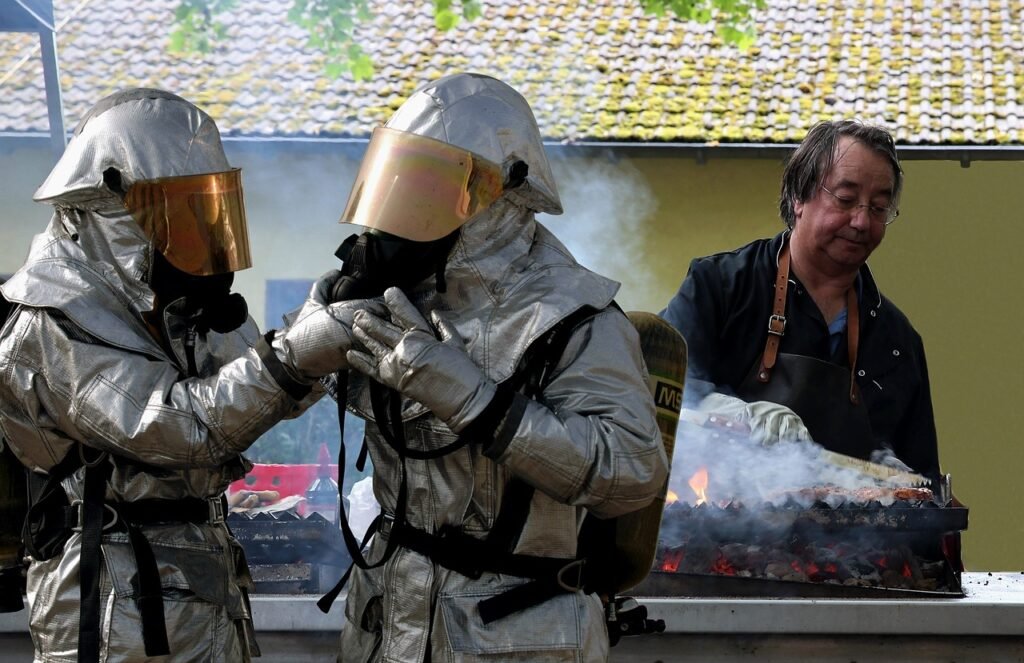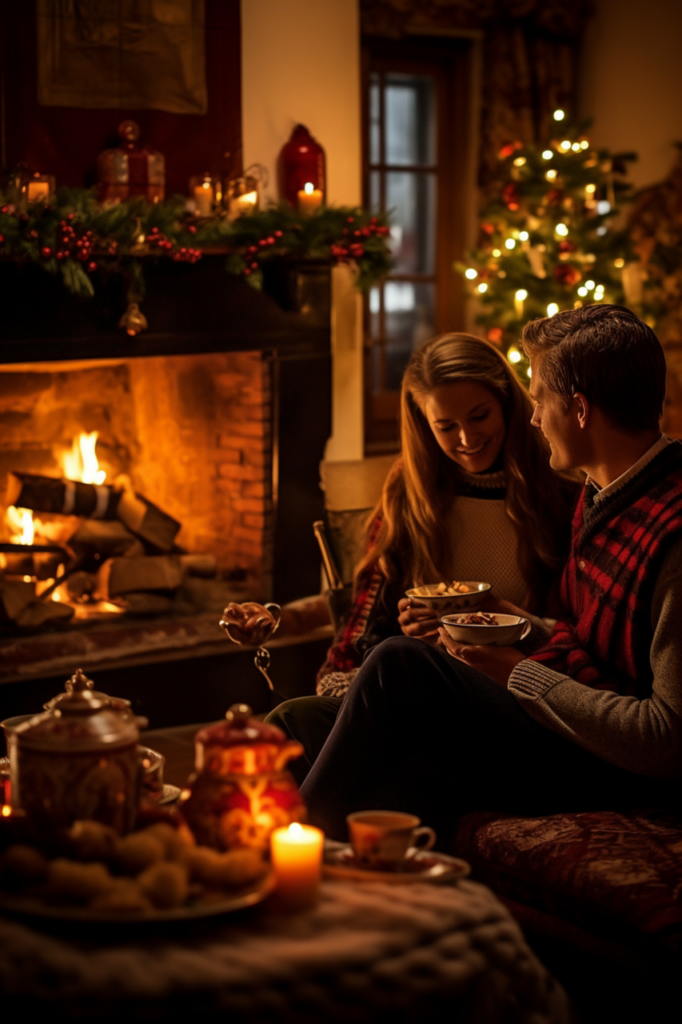Imagine snuggling up on a chilly evening, with the crackling fire in the fireplace casting a warm glow throughout the room. There’s something undeniably comforting about the ambiance of a cozy fire, but it’s important to ensure that your fireplace remains a source of warmth and relaxation, rather than a potential hazard. In this article, you’ll discover essential fireplace safety tips that will not only keep you and your loved ones safe, but also allow you to fully enjoy the cozy experience without any worries.
Choosing the Right Fireplace
When it comes to choosing a fireplace, there are several factors to consider. Researching different types of fireplaces is the first step in finding the perfect fit for your home. From traditional wood-burning fireplaces to modern gas or electric options, each type has its advantages and considerations.
Wood-burning fireplaces provide a cozy and authentic ambiance, but they require regular maintenance and can produce smoke and ashes. Gas fireplaces offer convenience and ease of use, with the option to control the flame and heat output. Electric fireplaces are a popular choice for their versatility and low maintenance requirements.
Considering safety features is crucial when selecting a fireplace. Look for fireplaces with safety controls and features like temperature sensors, automatic shut-offs, and childproof locks. Additionally, ensure that the fireplace meets local building and safety codes to prevent any potential hazards.
Lastly, evaluate the fuel options available for the chosen fireplace type. Wood-burning fireplaces require a steady supply of firewood, while gas fireplaces need natural gas or propane. Electric fireplaces, on the other hand, only require access to an electrical outlet. Choose a fuel option that suits your lifestyle and availability in your area.
Preparing the Fireplace
To ensure the safety and efficiency of your fireplace, it’s crucial to prepare it properly before each use. Regularly inspecting the chimney is essential to identify any damages or blockages. Look for signs of wear and tear, such as cracks, loose bricks, or an accumulation of debris. Calling a professional chimney sweep for an annual inspection is highly recommended to address any potential issues.
Cleaning the fireplace before use is also a crucial step in preparation. Remove any ashes and soot buildup, as they can restrict airflow and lead to poor combustion. Use a fireplace shovel and brush to carefully remove the debris, ensuring not to damage the firebox or chimney in the process.
Additionally, it’s important to remove any combustible materials from the surroundings of the fireplace. Keep furniture, curtains, rugs, and other flammable items at a safe distance. This precaution helps prevent accidental fires and ensures the safety of your home and loved ones.

This image is property of pixabay.com.
Protect Your Home: Fireplace Safety Tips
Safe Practices for Fireplace Usage
Using a protective screen or glass doors is an important safety measure when operating a fireplace. These safety features help contain sparks and prevent them from reaching flammable materials in the room. Make sure the screen or glass doors are properly installed and securely in place before starting the fire.
Never leaving the fire unattended is a golden rule when it comes to fireplace safety. It’s crucial to maintain constant supervision and attend to the fire until it has completely extinguished. This practice minimizes the risk of accidental fires and ensures that any issues can be addressed promptly.
Another important safety consideration is keeping flammable items away from the fire. Avoid placing decorations, clothing, or other items that can easily catch fire near the fireplace. Maintaining a clear and designated space around the fireplace reduces the risk of accidental ignition and potential injury.
Using only recommended fuel sources is essential to maintain the safety and efficiency of the fireplace. Follow the manufacturer’s guidelines and use the appropriate fuel for your specific fireplace type. Using improper fuels, such as paper, cardboard, or flammable liquids, can result in dangerous situations and damage to the fireplace.
Ensuring Proper Ventilation
Proper ventilation is crucial for fireplace safety and indoor air quality. Opening a window or door for fresh air intake helps maintain a steady airflow, which promotes efficient combustion and reduces the risk of smoke buildup in the room. This practice prevents issues such as poor indoor air quality, smoke backdrafts, and carbon monoxide accumulation.
Installing carbon monoxide detectors is an important step in ensuring the safety of your home. Carbon monoxide is an odorless and colorless gas that can be produced by poorly ventilated fireplaces. Detectors should be placed near the fireplace area and on each level of the house. Regularly check the batteries and functionality of these detectors to guarantee their effectiveness.
Avoid blocking or closing ventilation systems when the fireplace is in use. This includes vents, flues, and dampers. These components play a crucial role in carrying smoke and other byproducts of combustion safely out of your home. Blocking or closing them can lead to smoke backdrafts, poor airflow, and potential hazards.

This image is property of pixabay.com.
Fireplace Maintenance Tips
Regularly cleaning ashes and soot is an essential part of maintaining a safe and efficient fireplace. After ensuring that the fire is completely extinguished and the ashes have cooled, use a fireplace shovel to scoop the ashes into a metal container. Dispose of the ashes in a non-combustible area away from flammable materials.
Scheduling annual inspections by professionals is highly recommended to keep your fireplace in optimal condition. Chimney sweeps and qualified technicians can identify and address any potential issues, such as chimney blockages, cracked flue tiles, or damaged chimney caps. Regular inspections help prevent chimney fires and ensure the safety of your fireplace.
Replacing worn-out or damaged parts is crucial for maintaining the safety and efficiency of your fireplace. Over time, components like fireplace grates, doors, and screens can become weakened or warped. Ensure that these parts are in good condition and make any necessary replacements to avoid potential hazards.
Practicing Fireplace Safety with Children
Fireplace safety is particularly important when there are children in the household. Educating children about fireplace dangers is crucial to prevent accidents. Teach them about the heat and flames produced by the fire and explain the importance of keeping a safe distance.
Installing childproof barriers or gates can provide an additional layer of safety for your children. These barriers can be placed in front of the fireplace, preventing access and reducing the risk of accidental contact with the hot surfaces. Make sure these barriers are properly installed and secure to prevent any accidents.
Supervising children at all times when the fireplace is in use is essential. Children should never be left unattended near an active fireplace, as they may accidentally touch hot surfaces or attempt to play with the fire. Constant supervision ensures their safety and allows for immediate action in case of any issues.

This image is property of pixabay.com.
Fire Extinguishers and Safety Equipment
Choosing the right type of fire extinguisher is important for fireplace safety. Look for an extinguisher labeled for use on Class A fires, which are commonly associated with combustible materials like wood. Ensure that the extinguisher is easily accessible, properly maintained, and everyone in the household knows how to use it.
Knowing how to properly use a fire extinguisher is essential in case of an emergency. The acronym PASS can help you remember the steps: Pull the pin, Aim at the base of the fire, Squeeze the handle, and Sweep from side to side. Familiarize yourself with the instructions on the extinguisher and practice using it to ensure you are prepared.
Keeping other fire safety equipment handy is also advisable. This includes items such as fire blankets, which can be used to smother small fires, and a fire escape ladder if you have multiple levels in your home. Having these tools readily available can make a significant difference in addressing emergencies swiftly and safely.
Dealing with Smoke or Carbon Monoxide
In the event of smoke in the room, opening windows can help clear the air and improve ventilation. This action allows fresh air to enter and helps remove the smoke from the room. However, if the smoke persists or you suspect a larger issue, such as a chimney fire, it’s essential to take immediate action by contacting the fire department.
Identifying signs of carbon monoxide poisoning is crucial for your safety. Symptoms include headaches, dizziness, nausea, confusion, and flu-like symptoms. If you or anyone in your household experiences these symptoms while the fireplace is in use, it’s important to evacuate the premises immediately and seek medical attention. Carbon monoxide can be life-threatening and should not be taken lightly.
Taking immediate action in case of carbon monoxide is of utmost importance. If carbon monoxide is suspected, leave the house immediately and call the fire department or emergency services. Do not re-enter the building until it has been deemed safe by professionals. Carbon monoxide is a silent killer, and swift action can save lives.
Dealing with a Chimney Fire
Recognizing the signs of a chimney fire can help prevent extensive damage and potential house fires. Symptoms of a chimney fire include a loud cracking or popping noise, dense smoke, and intense heat. If you suspect a chimney fire, it’s crucial to act quickly and take the necessary steps to ensure your safety.
Closing the damper and doors of the fireplace is the first action to take when facing a chimney fire. This helps prevent the fire from spreading throughout the house and limits the oxygen supply to the fire. However, do not attempt to extinguish the fire yourself. Contact the fire department immediately and evacuate the house.
Contacting the fire department should be your priority in the event of a chimney fire. These professionals have the necessary equipment and expertise to handle chimney fires safely and effectively. Do not delay in making the call, as swift action can minimize damage and prevent the fire from spreading further.
Properly Disposing of Ashes
Properly disposing of ashes is essential for both safety and environmental reasons. After each use of the fireplace, allow the ashes to cool completely before handling them. Hot embers can remain hidden within the ashes and cause potential hazards if not properly extinguished.
Using a metal container for ash storage is recommended due to the heat resistance of metal. Place the cooled ashes into the metal container, ensuring it has a tight-fitting lid. This prevents accidental ignition of the surrounding area and keeps the ashes contained for safe disposal.
Disposing of ashes in a non-combustible area is crucial. Avoid placing the metal container directly on or near a combustible surface, such as wood, leaves, or paper. Ashes should be emptied into an area where they won’t pose a fire risk, such as a designated outdoor ash pit. Always follow local regulations and guidelines when disposing of ashes to prevent any potential hazards.
In conclusion, choosing the right fireplace and following proper safety measures are essential for enjoying the warmth and ambiance of a fire without worries. Through researching different types of fireplaces, considering safety features, and evaluating fuel options, you can make an informed decision. Preparing the fireplace, practicing safe usage, ensuring proper ventilation, and properly maintaining the fireplace are key steps for a safe and enjoyable fireplace experience. Educating children about fireplace dangers, having fire extinguishers and safety equipment readily available, and knowing how to deal with smoke or carbon monoxide are further precautions to prioritize. Lastly, properly disposing of ashes is crucial for maintaining a safe and clean fireplace environment. By implementing these fireplace safety essentials, you can create a cozy and secure environment for you and your loved ones to enjoy.




